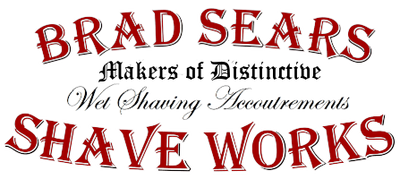Brush Care & Feeding
Proper Brush Care is Essential to Long Brush Life
Please note: Your badger brush might exhibit an “animal smell” at first, during what we call "the Break-in Period." It might also shed a few hairs during this time. Don’t worry, any smell and/or hair loss should disappear over the first 8 – 12 shaves.
Although we carefully prepare brushes shipped from our Maryland Eastern Shore workshop, it’s still a good idea to shampoo your new brush with warm water and a good quality shampoo with conditioner prior to first use. Do that by working up a good lather by gently “brushing” back and forth ("paintbrush strokes") against the palm of your hand. After a minute or so, rinse your brush thoroughly–again with warm water—until the water runs clear. Gently squeeze out the excess water, shake out the remainder, then dry the handle with a soft towel. Set your brush on its base and allow it to dry completely in a well-ventilated area. These few simple steps help prevent mildew and the buildup of soap scum around the bristles--the main cause of shedding usually after extended use.
The Keys to Long Brush Life…
- Don’t subject your brush to water hotter than your hand can tolerate! Be nice to it. Your brush is made of hair which will break and/or fall out if you mistreat it.
- When lathering, again use back and forth "paintbrush strokes." Compress your brush only about ¼ of the way down. Pressing harder, especially with "swirling" strokes, slows lather formation, ruins the tips and eventually leaves a “donut hole” in the center of the knot.
- After every use, rinse your brush thoroughly under warm water until the water runs clear. Then squeeze out the excess water, etc. as described above. If soap is left in the knot and builds up, it will damage the hairs and cause them to break off.when the knot is used.
Building Terrific Lather!
If you’re new to wet shaving, building terrific lather with your new brush can be a challenge! So, we’d like to offer some suggestions. Most of this pertains to soap, since that’s what we use. Cream users will need to pick and choose. The big thing is to relax and enjoy the experience!
To start, lather consists of three components: soap (or cream), water and air. Get those proportions right and you will build terrific lather! Let’s get to it….
First off, most lather “failures” come from using too much water. So, lesson #1 is controlling water application. The rule of thumb is to use too little rather than too much. You can always add more water, but it’s tough to take it away.
We like to soak the entire puck in water for five minutes or so while showering. Soaking the entire puck works for especially well for hard soaps like Mitchell’s Wool Fat—and for those who have hard water. The idea is to soften the soap to get it ready for “Loading the Brush.” (Cream users can obviously bypass this step.)
Next comes “prepping the brush.” Some folks like to soak their brushes for a few minutes. That’s fine, but since we engineer our brushes to hold a lot of water, prolonged soaking can result in too much water at the outset. So instead of soaking, I like to simply run the brush under warm tap water just enough to get it wet, then gently wring out most of the water. But if you do soak your brush, remember to do so in warm—not hot—water. (Hot water—hotter than your hand can stand for 30 seconds—will eventually ruin the hair and loosen the epoxy, which can result in shedding and other nasty things.)
Loading the brush. Loading the brush is probably the most important step—it’s certainly where most “lather failures” happen. If you’re using a synthetic brush, leave a little water on top of the puck; otherwise dump all the water. Then swirl the brush against the puck for 30-45 seconds, depressing the bristles no more than about ¼ of the way down. (Pressing any farther only slows the loading process and breaks the tips, eventually causing a “donut hole” in the center.) You should feel resistance as the tips drag across the soap. This means soap is collecting in the bristles. Ignore what appears to be lather forming at this stage. This “proto lather” is just a precursor to true lather. If the soap starts to feel dry and pasty, you can add a few drops of water. What we’re looking for is rubbery “goo” on both the soap and brush.
Now that our brush is loaded, we can either “face lather” or “bowl lather.” Which one you choose is purely personal preference. Let’s talk about face lathering first.
Face Lathering. Pass the loaded brush around on your face, alternating between swirls and back and forth “paint brush” strokes. Gradually add water, a little at a time, by dipping the tips of your brush in hot tap water. Continue lathering for a few minutes or until the lather reaches a rich, foamy consistency.
Bowl lathering. Bowl lathering is similar to face lathering except here we develop our lather in a shaving bowl or scuttle (again, the choice is yours.) Put a few drops of tap water in the bottom of the bowl, then swirl the brush (yes, this is the exception to the rule!) around for 30 seconds or so gradually adding water a little at a time until the desired consistency is reached. Again, depress the brush only about ¼ of the way down. Then start lathering your face.
These techniques that work for me; but “your mileage may vary." You can always call or email me with questions. I love to hear from you. There are also a ton of shaving videos on YouTube and lots of advice on the shaving forums.
Bottom line: I find immense satisfaction in building terrific lather the way my father and grandfathers did. It’s one way to connect with the generations that have gone before us. But whether you think this way or not, the big thing is to enjoy the ride!
Yours in fine shaving,
Brad



